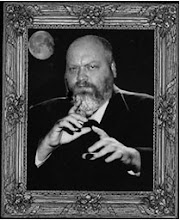Secrets from tomb of the ancient unknown warriorBy Paul Stokes
(Filed: 10/03/2005)
An ancient British warrior leader found buried in his chariot beside the A1 in west Yorkshire probably originated from Scandinavia or the Scottish Highlands.
Experts have been unable to establish how the slim, 5ft 9in tall man met his death 2,400 years ago when he was 30 to 40 years old. But the find has opened the possibility that the site at Ferrybridge may have been of great significance to ancient Britons, perhaps the venue for a mass rally. Unusually for the time, the man had good teeth and his skeletal remains showed no evidence of wounding or long-term illness. He had been laid on the chariot, which was buried intact. Many of its metal fittings were well preserved when it was discovered during road improvements.
A brooch and horse harness were among bronze and iron objects also identified by analysts at the University of Bradford and the Highways Agency's specialist contractor, Oxford Archaeology. The finds were made during excavations in December 2003 for a £245 million scheme to upgrade the A1 motorway.
At first it was believed that a huge number of cattle found in a ditch around the burial site may have been the remains of a huge banquet to commemorate the man's funeral. But tests have shown that the chariot burial took place at the beginning of the 4th century BC, while the cattle, which came from different regions, were deposited in the Roman period, the second century AD.
Angela Boyle, the head of burial archaeology at Oxford Archaeology, who led the site excavation, said: "It could be some massive affirmation of their identity at a location which had tremendous significance in their culture.
"This site at Ferrybridge would have been venerated for generations. It had been used for burials for thousands of years, there is a henge close by and there is evidence of some building, perhaps a shrine, close to the burial site.
"The burial mound of this warrior would have been visible for some distance and perhaps his life story was etched in the history of the people as a great leader. We know the Romans were not far away at this time, changing the only world these people would have known. It might have been a gathering of people at the grave of a revered leader from their history, calling for guidance or support in the face of the invasion. It might also have been a council of war, but we know there was little resistance in this area to the Roman colonisation."
Chariot burials were reserved for people of high status. Only 20 have previously been unearthed, with one in Edinburgh and the rest in east Yorkshire. Strontium testing showed that the man originally came from either Scandinavia or the Highlands while the burials had previously been linked to the Paris tribe, who colonised the area from northern France.
Dr Janet Montgomery, a research fellow at Bradford University, said:"For some reason these people came together here in their thousands. Our tests show that these animals came from different herds raised in different places.
"These beasts were driven here and slaughtered for a great feast."

